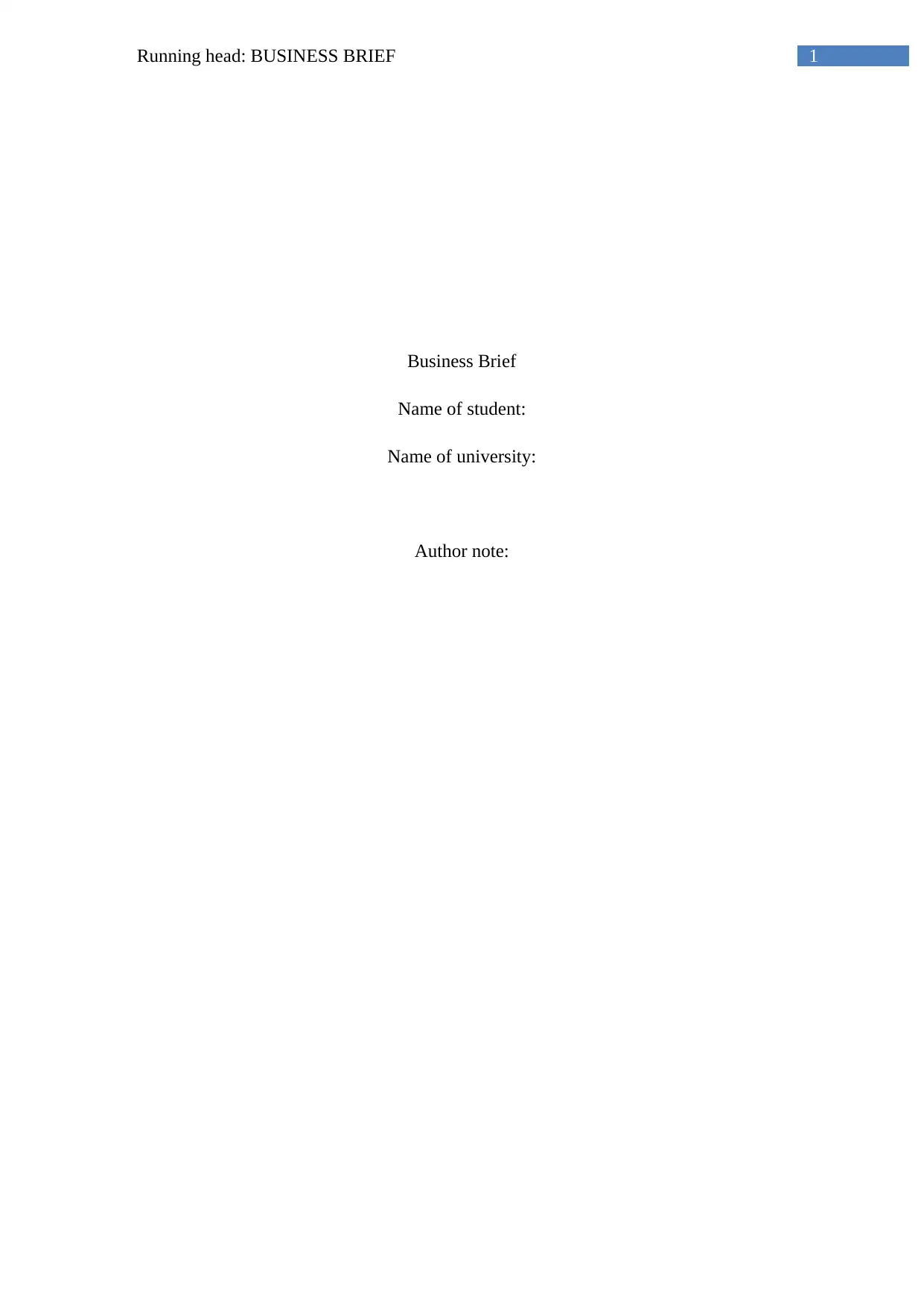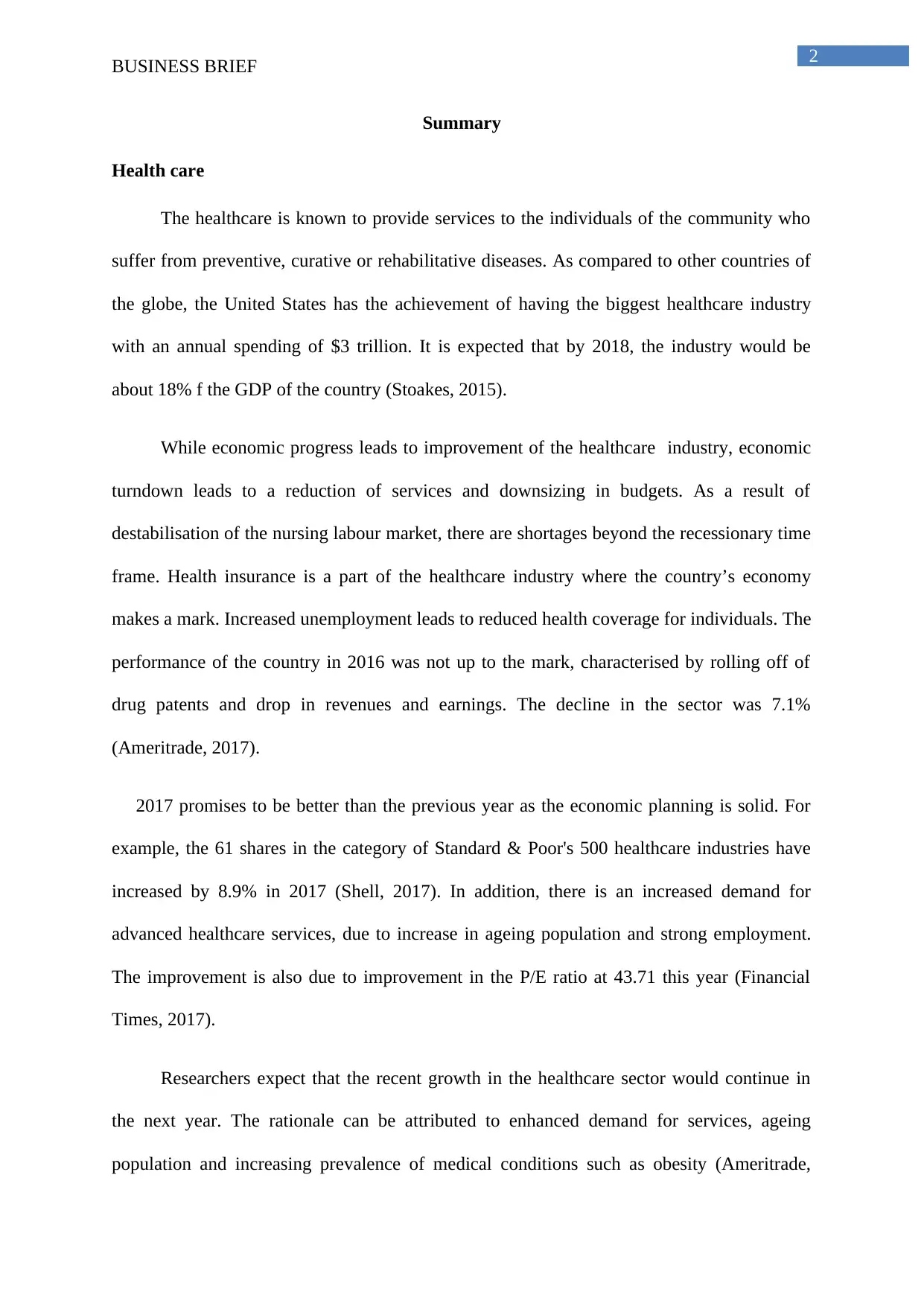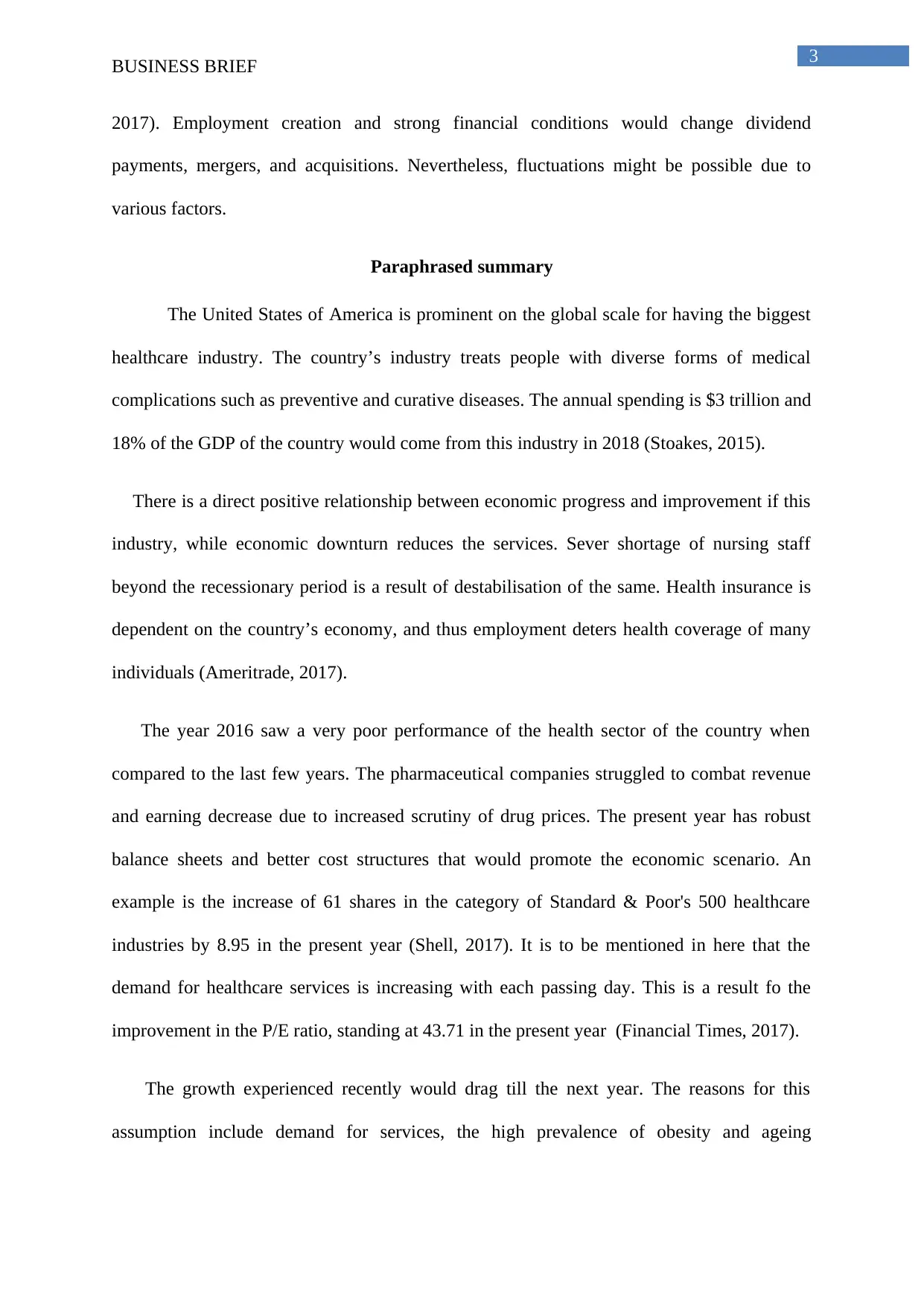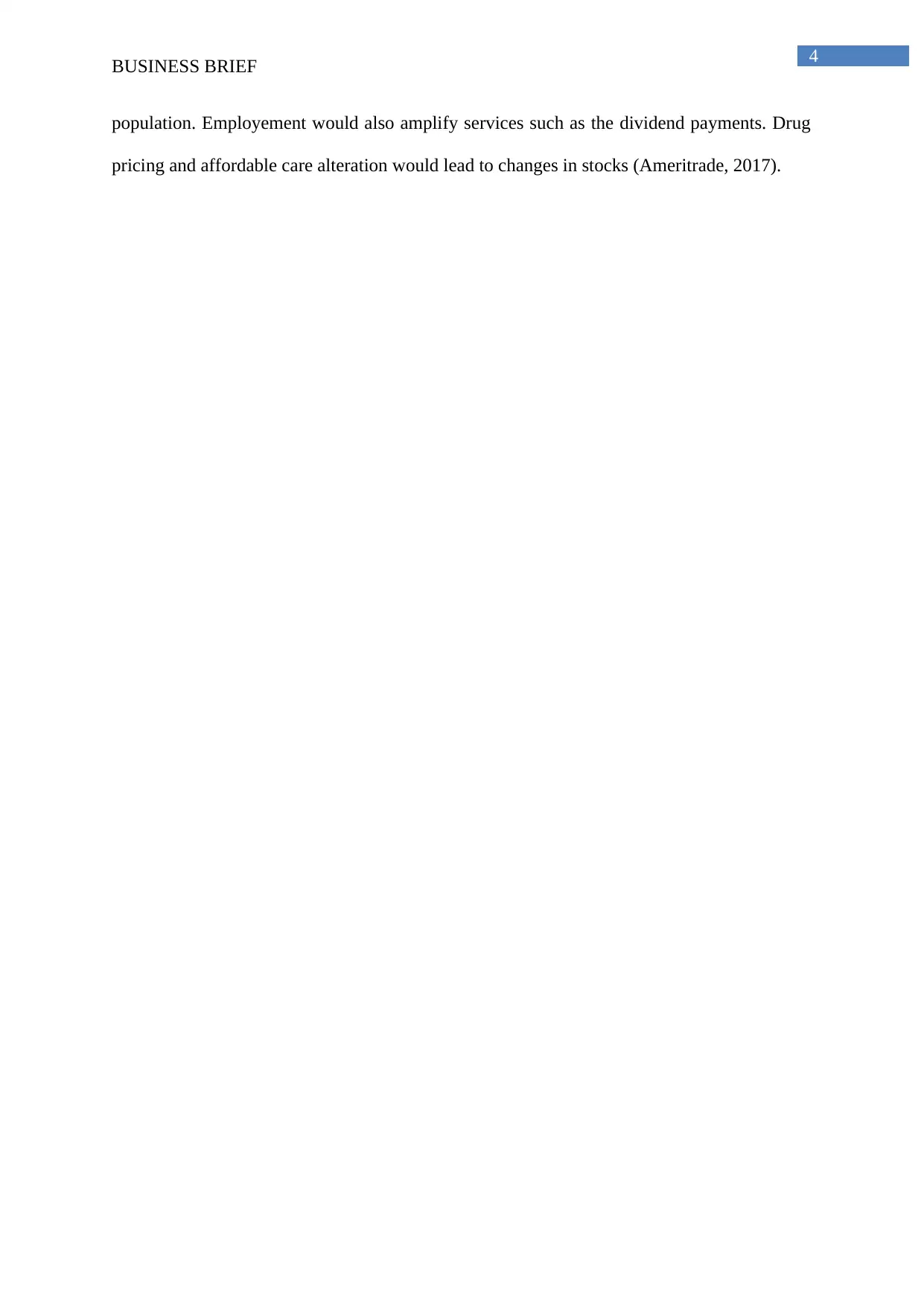Healthcare Industry Business Brief Analysis: Performance and Outlook
VerifiedAdded on 2019/10/30
|4
|711
|254
Report
AI Summary
This business brief provides an overview of the healthcare industry, focusing on the United States. It highlights the industry's significant economic impact, with annual spending of $3 trillion and its contribution to the GDP. The report discusses the relationship between economic conditions and the healthcare sector, noting the impact of unemployment on health coverage and the challenges faced in 2016, such as revenue declines. It also examines the positive developments in 2017, including increased share values and improved P/E ratios, driven by factors like an aging population and strong employment. The brief anticipates continued growth in the healthcare sector due to increased demand for services and the prevalence of medical conditions like obesity, while acknowledging potential fluctuations due to factors like drug pricing and affordable care alterations. The report emphasizes the importance of healthcare services and its dependence on the country's economic conditions.
1 out of 4










![[object Object]](/_next/static/media/star-bottom.7253800d.svg)